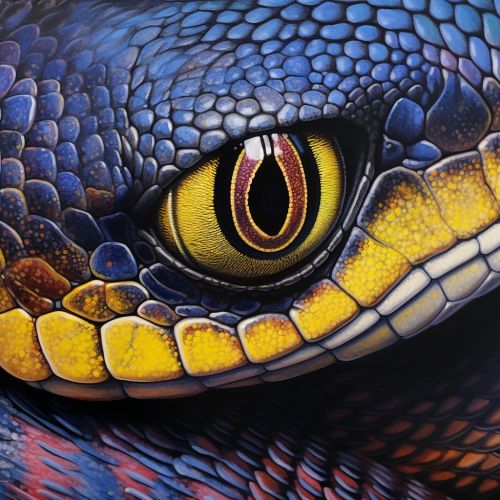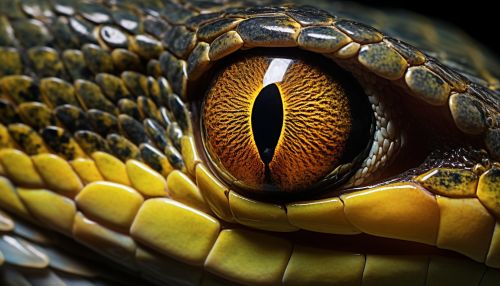Snake Anatomy
Introduction
Snakes are elongated, legless, carnivorous reptiles of the suborder SerpentesSerpentes. Unlike legged reptiles, snakes are characterized by their lack of eyelids and external ears. They are known to inhabit a wide range of environments across the globe, and their anatomy has evolved to suit their diverse ecological roles.


External Anatomy
Skin and Scales
The skin of a snake is covered in scalesscales. These scales, which are made of keratinkeratin, the same substance that makes up human hair and nails, serve several functions. They provide protection from the environment, aid in locomotion, and in some species, play a role in camouflage and display.
Eyes
Snakes lack eyelids, instead, their eyes are covered by a transparent scale known as a spectacle or brillebrille. This adaptation protects the eyes from damage and dehydration.
Mouth and Teeth
Snakes have a unique jaw structure that allows them to swallow prey much larger than their head. The lower jaws (mandibles) are not rigidly attached to the skull, but are connected by a flexible ligament that allows them to move independently. Snakes also have numerous sharp, backward-facing teeth that aid in capturing and holding onto their prey.
Internal Anatomy
Digestive System
The digestive system of a snake is adapted to handle large prey items. The stomach is elongated and can stretch significantly to accommodate large meals. Following the stomach, the small intestine absorbs nutrients from the digested food. The large intestine then reabsorbs water and forms feces, which are expelled through the cloacacloaca.
Respiratory System
Snakes have a unique respiratory system that allows them to breathe even while swallowing large prey. They have a single functional lung (the right lung), while the left lung is either greatly reduced or absent. The trachea is elongated and can be extended out of the mouth, allowing the snake to breathe while its mouth is full.
Circulatory System
The snake's circulatory system is also adapted to its elongated body shape. The heart is elongated and can shift position within the body cavity to accommodate large meals. Snakes have three-chambered hearts, with two atria and a single ventricle.
Nervous System
The nervous system of a snake is highly adapted for its predatory lifestyle. Snakes have excellent sensory systems, including highly developed olfactory and vomeronasal systems for detecting chemical cues, and in some species, heat-sensing pits for detecting warm-blooded prey.
Reproductive System
Snakes employ a variety of reproductive strategies, ranging from oviparity (egg-laying) to viviparity (giving birth to live young). The reproductive organs in males are called hemipeneshemipenes, which are usually held inverted within the body, and are everted for copulation.
Locomotion
Snakes employ several methods of locomotion, including lateral undulation, sidewinding, concertina movement, and rectilinear movement. These methods of movement are made possible by the snake's muscular system and its numerous vertebrae and ribs.
Conclusion
The anatomy of snakes is a fascinating study of adaptation and specialization. From their unique jaw structure that allows them to swallow large prey, to their highly developed sensory systems, snakes are a testament to the power of evolutionary adaptation.
